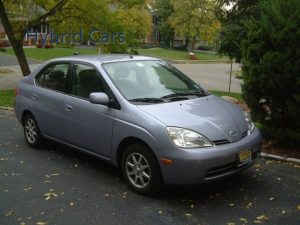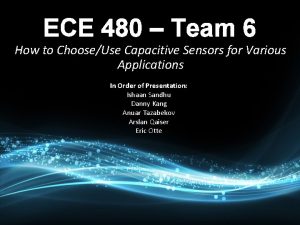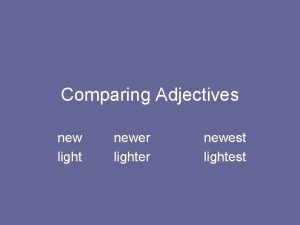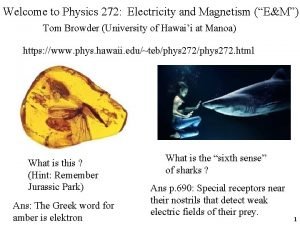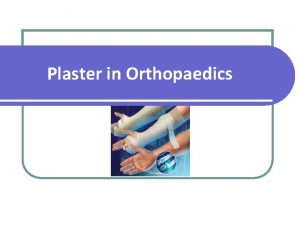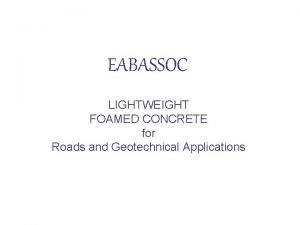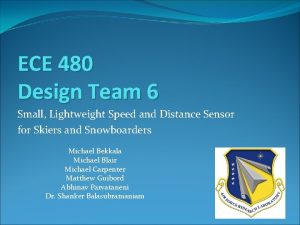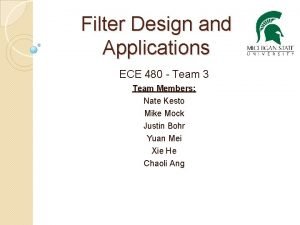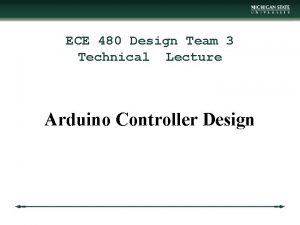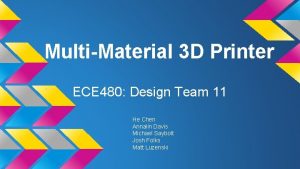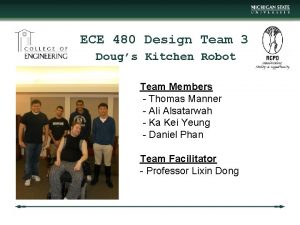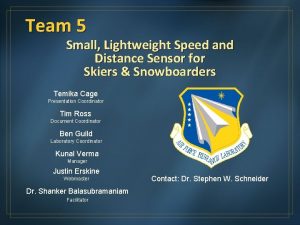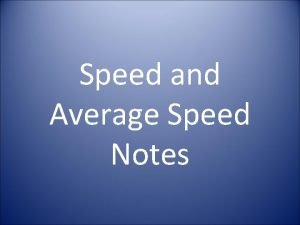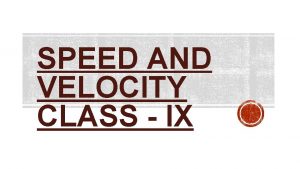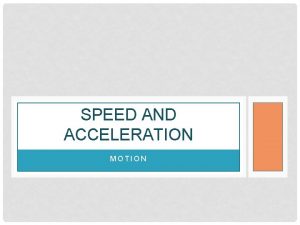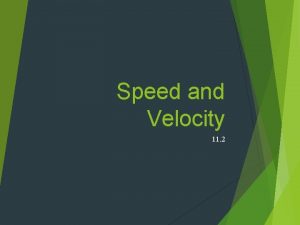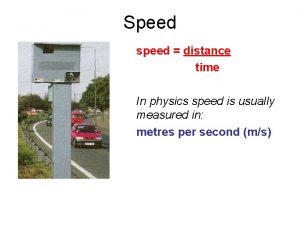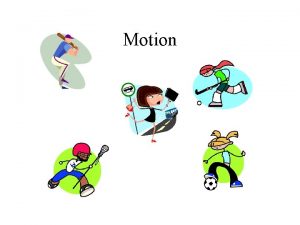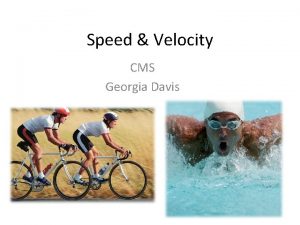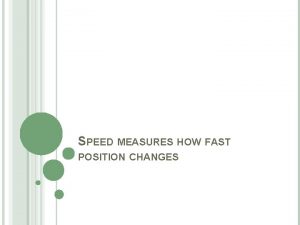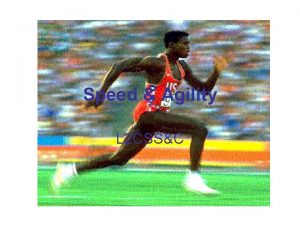ECE 480 Design Team 6 Lightweight Speed and



















- Slides: 19

ECE 480 Design Team 6 Lightweight Speed and Distance Sensor for Skiers and Snowboarders Michael Bekkala Michael Blair Michael Carpenter Matthew Guibord Abhinav Parvataneni Facilitator: Dr. Shanker Balasubramaniam

Agenda n n n Background Objective Design Specifications Potential Solutions Proposed Solution Conceptual flowchart and Hardware

Goal of Competitive Sports 1) 2) 3) Win Perform better than the competition Improve performance • Requires tracking of statistics n n n Jump Higher Run Faster Hit Harder

Bicycle Speedometer n n Sensor mounts to wheel and frame Counts time between wheel sensor passing frame sensor Calculates wheel speed Forward speed is proportional to rotation of wheel

Nike Plus (Nike+) Sensor placed in shoe n Determines how long pressure is applied to the foot n The time that pressure is applied is directly proportional to the runner’s speed n

Objective n n Design a speed and distance sensor for skiing and snowboarding Current Products: • • • n Expensive Inaccurate Inconvenient Objective: • • • Greater accuracy Lower cost Improve functionality

Design Specifications n Safety • Disable display while moving n n n Functionality • • • User definable auto shutdown time PC interface for data review Ease of use in winter apparel • • Operate at subzero temperature (-10°F) Shock resistant Waterproof Weigh less than 2 lbs Packaging Cost - less than $500

Potential Solutions 1) 2) 3) 4) Relative Positioning Inertial Navigation System (INS) Global Positioning System (GPS) Integration of INS and GPS

1. Relative Positioning n Transmitter locally placed • Sends out signal to receiver • More transmitters = Better accuracy n Receiver gets signal from transmitter • Calculates distance from transmitter • Derivative of distance = Speed

1. Relative Positioning n Advantages: • Accurate • Reliable • Independent of external systems n Disadvantages: • Complex • Requires a locally placed transmitter • Relative position vs. absolute position

2. Inertial Navigation System n 3 Accelerometers • • • n 3 Gyroscopes • • • n Measure Linear Acceleration X, Y, Z Directions Integrate to get speed and distance Measure Angular Velocity Pitch, Roll, Yaw Integrate to get angular position Coordinate conversion • Body Frame to ECEF

2. Inertial Navigation System n Advantages: • Very accurate for short periods of time • Updates faster than GPS n Disadvantages: • Requires at least 6 sensors • Susceptible to bias drifts • Error increases over time (t^2) • Requires initial condition

3. Global Positioning System n Receives time data from satellites • Requires very accurate timing • Atomic clocks on board satellites n Triangulates position • Uses distance from satellites • Fourth satellite used for error correction

3. Global Positioning System n Advantages: • Inexpensive • Low Power • Gives absolute position • Reliable over long periods of time n Disadvantages: • Low accuracy for moving targets

4. Integration of GPS and INS n n n Proposed Design Combines both systems into one Takes advantage of each system • Short term accuracy of INS • Long term reliability of GPS n n GPS keeps INS errors in check Use Kalman filter to improve accuracy of integrated system

4. Integration of INS and GPS n Advantages: • Most accurate • Takes advantage of each system • Gives absolute position n Disadvantages: • More complex • Requires heavy computation • Requires more hardware

Conceptual Design

Hardware Components Ardupilot Sensor Board - Six Degrees of Freedom • Three axis accelerometer (x, y, z) • One axis gyroscope (roll) Gyro Breakout Board - LPY 5150 AL Dual 1500°/s • Dual axis gyroscope • Senses pitch and yaw

Hardware Components Venus GPS with SMA Connector • Up to 10 Hz refresh rate • 28 m. A operating current • Accuracy is <2. 5 m Quadrifilar V Omnidirectional Passive GPS Antenna • Passive Antenna • -5 d. B Gain
 480+480
480+480 Ece 480
Ece 480 Formula for speed distance and time
Formula for speed distance and time Lightweight comparative and superlative
Lightweight comparative and superlative How can emotions affect your driving
How can emotions affect your driving Speed detection of moving vehicle using speed cameras
Speed detection of moving vehicle using speed cameras Talking ben scratch
Talking ben scratch What is scratch
What is scratch The scratch stage is 480 pixels wide and 360 pixels high
The scratch stage is 480 pixels wide and 360 pixels high The scratch stage is 480 pixels wide and 360 pixels high
The scratch stage is 480 pixels wide and 360 pixels high The scratch stage is 480 pixels wide and 360 pixels high
The scratch stage is 480 pixels wide and 360 pixels high What is this
What is this Honeytoken accounts ata
Honeytoken accounts ata Slab in orthopaedics
Slab in orthopaedics High performance concrete
High performance concrete We are catfish for dinner figurative language
We are catfish for dinner figurative language Lightweight foamed concrete fill
Lightweight foamed concrete fill Lightweight markup language
Lightweight markup language Almmii
Almmii Shampoo simile hyperbole
Shampoo simile hyperbole
